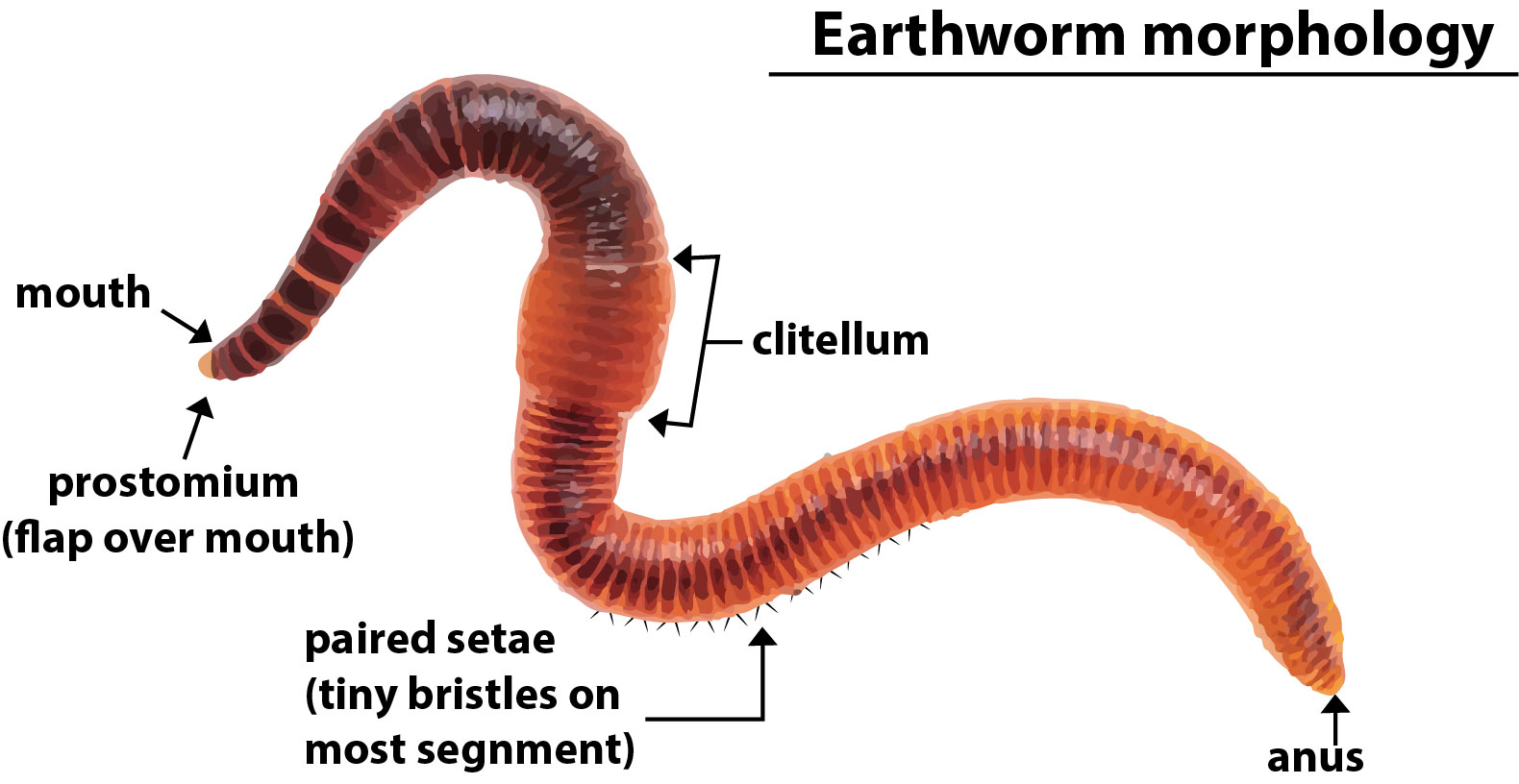
Hermaphrodite animals are maximum in
(a) Annelida
(b) Mammals
(c) Nematoda
(d) Cnidarians
Answer
473.7k+ views
Hint: Hermaphrodite animals are maximum in the phylum which possesses external as well as internal segmentation. One of its members is known as ‘friends of farmers’ as it provides the soil with quick aeration and absorption of water.
Complete step by step answer:
Phylum Annelida is a large phylum. Annelids are mostly known as ringworms or segmented worms. They are coelomate (body cavity) and triploblastic. A significant percentage of its members are hermaphrodite. A hermaphrodite animal is the one that possesses both male and female reproductive organs in its body. But they rarely undergo self- fertilization as both the testes and ovaries do not mature at the same time. Also, the relative positions of openings of both the organs discourage self- fertilization.

Cross- fertilization occurs via copulation. E.g Earthworms.
- The phylum aschelminthes or Nematoda has animals that are mostly parasitic in plants or in animals. Though some are also free- living known as flukes. E.g Ascaris, Loa loa.
- The body of nematodes is long, cylindrical and fusiform i.e pointed at both ends. The body wall is composed of cuticle, epidermis, and musculature. They are characterized by the presence of a false body pseudocoelom that is not lined by epithelium.
- Cnidarians are radially symmetrical, diploblastic, and multicellular organisms with a tissue grade of organization. Coelenterates are aquatic with habitats ranging from freshwater to marine. They may exist in solitary forms or forming colonies. They may be free- swimming or sedentary. E.g. Hydra, Obelia.
- Mammals exhibit the following unique features such as the presence of mammary glands to nourish the young ones. They also have a muscular diaphragm separating the thorax from the abdomen. E.g. lion, humans.
So, the correct answer is ‘(a) Annelida.’
Note:
- Two types of body forms exist in coelenterates - polyps or polyploid and medusae or medusoid. Polyps are sessile forms of the animals who live in colonies and reproduce asexually while medusae are free- living and can only reproduce sexually.
- Obelia is a coelenterate that exhibits metagenesis or alternation of generation.
Complete step by step answer:
Phylum Annelida is a large phylum. Annelids are mostly known as ringworms or segmented worms. They are coelomate (body cavity) and triploblastic. A significant percentage of its members are hermaphrodite. A hermaphrodite animal is the one that possesses both male and female reproductive organs in its body. But they rarely undergo self- fertilization as both the testes and ovaries do not mature at the same time. Also, the relative positions of openings of both the organs discourage self- fertilization.

Cross- fertilization occurs via copulation. E.g Earthworms.
- The phylum aschelminthes or Nematoda has animals that are mostly parasitic in plants or in animals. Though some are also free- living known as flukes. E.g Ascaris, Loa loa.
- The body of nematodes is long, cylindrical and fusiform i.e pointed at both ends. The body wall is composed of cuticle, epidermis, and musculature. They are characterized by the presence of a false body pseudocoelom that is not lined by epithelium.
- Cnidarians are radially symmetrical, diploblastic, and multicellular organisms with a tissue grade of organization. Coelenterates are aquatic with habitats ranging from freshwater to marine. They may exist in solitary forms or forming colonies. They may be free- swimming or sedentary. E.g. Hydra, Obelia.
- Mammals exhibit the following unique features such as the presence of mammary glands to nourish the young ones. They also have a muscular diaphragm separating the thorax from the abdomen. E.g. lion, humans.
So, the correct answer is ‘(a) Annelida.’
Note:
- Two types of body forms exist in coelenterates - polyps or polyploid and medusae or medusoid. Polyps are sessile forms of the animals who live in colonies and reproduce asexually while medusae are free- living and can only reproduce sexually.
- Obelia is a coelenterate that exhibits metagenesis or alternation of generation.
Recently Updated Pages
Can anyone list 10 advantages and disadvantages of friction

What are the Components of Financial System?

How do you arrange NH4 + BF3 H2O C2H2 in increasing class 11 chemistry CBSE

Is H mCT and q mCT the same thing If so which is more class 11 chemistry CBSE

What are the possible quantum number for the last outermost class 11 chemistry CBSE

Is C2 paramagnetic or diamagnetic class 11 chemistry CBSE

Trending doubts
Which is not a source of freshwater 1 Glaciers and class 11 chemistry CBSE

10 examples of friction in our daily life

The correct order of melting point of 14th group elements class 11 chemistry CBSE

Difference Between Prokaryotic Cells and Eukaryotic Cells

One Metric ton is equal to kg A 10000 B 1000 C 100 class 11 physics CBSE

What is the specific heat capacity of ice water and class 11 physics CBSE




